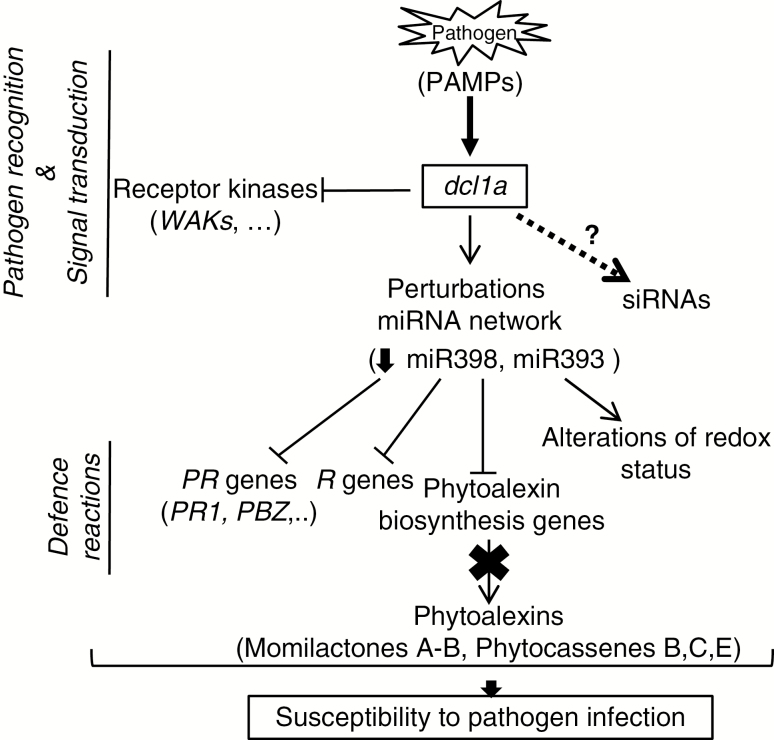Fig. 7.
Model for the role of OsDCL1a in disease susceptibility. In response to M. oryzae infection, OsDCL1a is activated. Pathogen-induced OsDCL1a expression, as well as OsDCL1a activation in dcl1a-Ac plants, would cause perturbations in the host miRNAome, which, in turn, would negatively affect pathogen recognition processes and expression of stress-responsive genes (such as PR genes). Additionally, OsDCL1a activation would negatively affect diterpenoid biosynthesis and alter ROS homeostasis, thereby compromising the ability of the host plant to mount a timely, targeted defence response.

